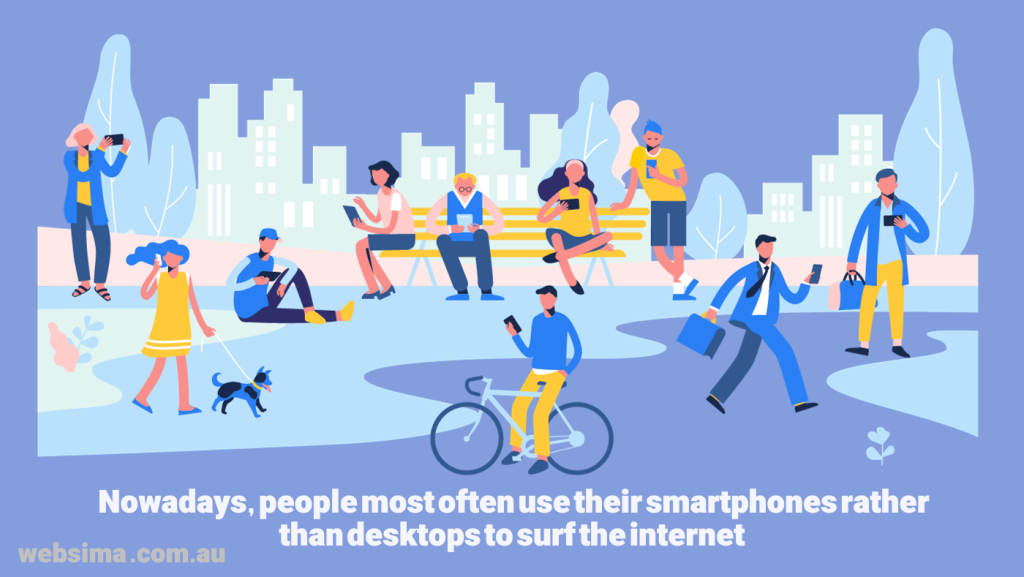 Since the introduction of smartphones, the internet usage pattern started to change dramatically. People used to be working with desktop or laptop computers to get connected to the internet and surf the web. Nowadays, people most often use their smartphones rather than desktops to surf the internet. As such, it is quite important that every website regardless of its type and size be displayed on mobile screens of any size perfectly.
Since the introduction of smartphones, the internet usage pattern started to change dramatically. People used to be working with desktop or laptop computers to get connected to the internet and surf the web. Nowadays, people most often use their smartphones rather than desktops to surf the internet. As such, it is quite important that every website regardless of its type and size be displayed on mobile screens of any size perfectly.
The price of web design services in Australia, if it comes from reputable service providers, is relatively high. Hence, you must be vigilant to design a mobile friendly website to make sure all the requirements for a shining website are in place. Let’s now dive deeper and see the essentials for having a mobile friendly website.
Tips to design a mobile friendly website
There are quite a few practices in order to design a mobile friendly website. Here are the most important ones.
1- Make it Mobile-Responsive
The first and most important practice for a website to be mobile friendly is mobile responsiveness. In other words, a mobile responsive layout is supposed to rescale itself according to the visitor’s device screen size for a perfect display. For further information on how to make a mobile-responsive website, you may follow the link.
2- Optimize web pages loading speed
 The convection rate of websites that load in one second is three times higher than websites that load in five seconds, according to a survey conducted by Portent. The faster your website loads, the more mobile friendly your website looks from users’ perspective. Hence, make sure to make yourself familiar with how to optimize website loading speed, as mobile users are after fast response and never proceed with a slow loading website.
The convection rate of websites that load in one second is three times higher than websites that load in five seconds, according to a survey conducted by Portent. The faster your website loads, the more mobile friendly your website looks from users’ perspective. Hence, make sure to make yourself familiar with how to optimize website loading speed, as mobile users are after fast response and never proceed with a slow loading website.
3. Make images optimized
Never fail to compress images when uploading into your website. Images big in size would adversely affect your website loading speed and mobile-friendliness. Utilize free online tools such as Optimizilla to compress images without sacrificing the quality before uploading into your website.
4. Don’t use Pop-ups
Even though pop-ups might be working well on desktop screens, they bother users on mobile screens. They are hard to read and also difficult to close off on mobile screens. It is highly recommended to avoid using pop-ups, if you want a mobile friendly website.
5- Avoid Adobe Flash and use HTML 5 instead
Adobe flash is a perfect tool for making animations. However, such animations only work well on desktops. Flash animation doesn’t load and play on mobile screens. As an alternative, utilize HTML 5, as it is well-supported by mobile devices.
6- Use proper font size and style
Make sure that the font size and style you are using on your website is legible and readable on mobile screens. It’s always a good idea to test the readability of the font size and type on mobile screens to ensure it’s perfectly readable.
7- Avoid cluttered design
A cluttered website design makes users confused, particularly on mobile screens. Assume a web page on your mobile screen that is overwhelmed by multiple CTA buttons, links, etc. In most cases, users would close the web page off and look for another website. Make sure the design is simple and clean and proper white spaces are in place. White space helps to separate out the links, buttons, text and images. If you need further information on what is white space in web design and why it is important on a website, you may follow the link.
8- Properly locate and set the size of CTA buttons
CTA buttons must be large enough for mobile users to easily push them with their thumbs. Additionally, most users click on CTA buttons while they are scrolling down. As such, the perfect location for such buttons is recommended to be at the bottom of the web page.
Wrapping up
The mobile-friendliness of a website is as important as having a website for all types of businesses. The majority of internet users across the globe are now using their mobile phones to surf through the internet. Mobile-friendliness is not only essential for improving UX, it creates credibility and trustworthiness for your business.
As such, you must make sure that your website not only works well on bigger screens like desktops and laptops, but also displays well on all mobile screens no matter what their dimensions are.
Websima, as the leading web design and SEO service provider across the Australian market is always here to help. If you are willing to build a professional and mobile friendly website, feel free to contact us and book for your free consultation meeting with our talented team. We are fully committed to provide you with a solution that suits your needs best.





